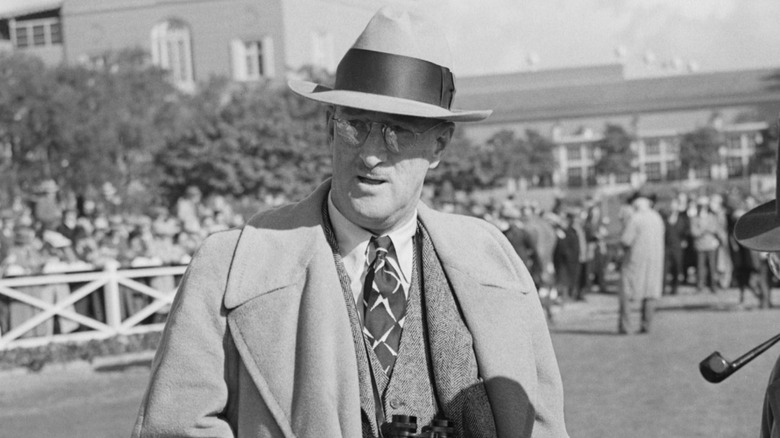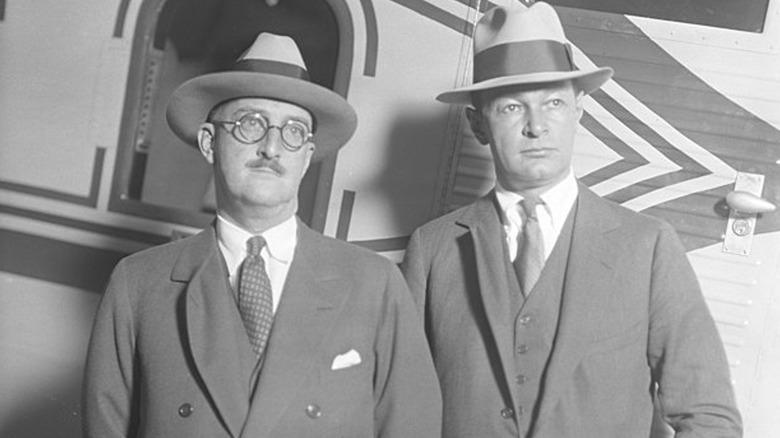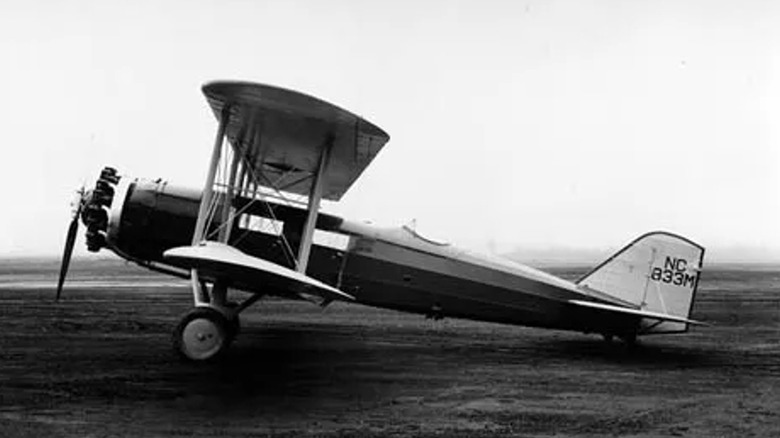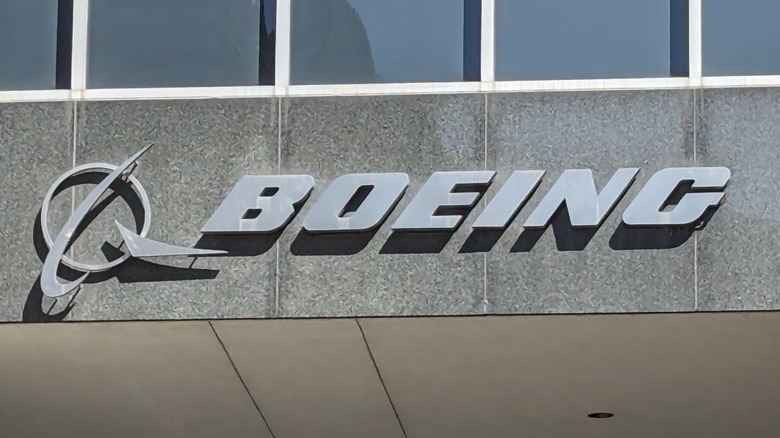Who Was William Boeing? The Man Behind The World's Most Famous Airplanes
Air travel has become an integral part of the modern world, to the degree that looking up and spotting an airplane flying across the sky isn't difficult in the least. Simultaneously, Boeing has become one of the most well-known companies on the planet thanks to its efforts in the aviation arena. Not only is it a recognizable name within the commercial airline world, but Boeing has several military planes in service today as well. The company has even dipped its toe into the helicopter pool. Behind all of the success the brand enjoys is the man who started it all decades ago, the late William Edward Boeing.
As implied by the shared name, the company Boeing was first helmed by William Boeing way back when it got its start in 1916, though his story dates back much further. He was born in Detroit, Michigan, to parents Wilhelm and Marie Boeing back in 1881. Wilhelm built wealth via several business efforts, including taking the lumber industry by storm with Karl Ortmann, serving as the director of Peoples Savings Bank, president of Galvin Brass and Iron Works, and becoming a shareholder in the Standard Life Insurance Company. Sadly, Wilhelm died of influenza when Boeing was just 8 years old.
Though he could've coasted on his family's money, Boeing grew up, got an education in Vevey, Switzerland, returned to the United States in the early 1900s, and set his sights on his first business venture, the Greenwood Timber Company. However, Boeing, ever the businessman and perfectionist, had higher aspirations. In time, Boeing took to the runway, ready to take to the skies and build a legacy with his true passion.
Boeing's did what he could to keep his company in the air
Fast forward a few years to 1915, and the stage was set for William Boeing's life and the aviation world as a whole to change forever. He applied to the Glenn L. Martin flight school in Los Angeles, California, to learn how to fly, acquiring a Model TA Hydro Sea Plane to do so. Not only was Boeing still interested in learning how to fly, but he became incredibly intrigued by the technical side of flight. With that, he, Boeing co-founder George Conrad Westervelt, and a team of builders, engineers, and more created the first Boeing aircraft, the Boeing B&W. With that, the story of Boeing truly began.
Though Westervelt departed the company in 1916, Boeing stuck by it for multiple decades — going above and beyond to keep the business afloat as the 20th century became increasingly tumultuous. He enlisted in the United States Navy Reserve during the First World War and diversified his company's offerings to non-aviation-related products to turn a profit during the conflict. Boeing suddenly got into the furniture, boat, and corset fixture business, all while maintaining his lumber business and pulling from his own savings to keep his employees paid. In another instance of Boeing using his deep pockets for the company's benefit, he later underwrote a $500,000 bond entirely of his money to help land an airmail contract.
[Featured image by Los Angeles Times via Wikimedia Commons | Cropped and scaled | CC BY 4.0]
Boeing's aviation accomplishments
Through all the hardship, William Boeing stayed the course by any means necessary, and his dedication to his craft proved worth it in the end. More specifically, Boeing was able to add some remarkable aviation-related feathers to his cap. First and foremost, his company stood at the forefront of World War I, delivering Model C trainer planes and HS-2L flying boats for the United States Navy. In the wake of the globe-spanning conflict, Boeing oversaw the development of the GA-2 biplane, the Model 21 seaplane, and the PW-9, along with a host of other aircraft.
In the second half of the 1920s, Boeing found resounding success with the introduction of the mail-delivering Model 40A passenger plane, which came equipped with an air-cooled engine rather than the then-standard water-cooled engine. This meant the plane was lighter, allowing for more cargo per trip, and less likely to malfunction, as water-cooled engines are comparatively more prone to. This innovation went a long way in helping him score that aforementioned airmail contract, which launched in 1927. Boeing's operation expanded in 1929 to become the multi-faceted United Aircraft and Transportation Corp., consisting of several manufacturers and airlines under one roof.
By the 1930s, Boeing was undoubtedly a made man. The little aviation company he and George Westervelt started a few decades before had grown into not just an industrial powerhouse in the United States but a globe-spanning juggernaut. Its leader, on the other hand, was soon to hand over the reins.
[Featured image via Wikimedia Commons | Cropped and scaled | Public Domain]
The end of the William Boeing era
By 1934, U.S. anti-trust legislation required the disbanding of the UATC, prompting Boeing to largely bow out of the aircraft industry. He resented the politics that led to the breakup of his ever-expanding company, so he decided to resign from his post as chairman and sell his stock in the company in 1934. That same year, he was awarded the Daniel Guggenheim Medal for aeronautical achievement, only going on to return to the aviation world a handful of times afterward.
Despite the frustration with how the United Aircraft and Transportation Corporation was dissolved, Boeing had one last minor stint in his company during World War II. He lent his expertise as a consultant as the need for war-ready planes increased. In total, the Boeing company produced nearly 100,000 aircraft during the war and accounted for roughly 28% of the country's overall aircraft output. Beyond this, though, Boeing focused on other parts of his life and his community. He made various investments; he upheld his lumber business until the mid-1950s, spent time with his children and his wife, Bertha Potter Paschall, and bred racehorses.
He and Bertha were able to see the dawn of the Boeing Jet Stratoliner and Stratotanker in 1954 before their deaths on September 28, 1956, and June 27, 1977, respectively. The impact of William Boeing on the aviation world cannot be understated. He may not have lived to see all of the best jets Boeing has ever made soar through the clouds, but his influence and commitment to innovation and perfection remain present within them and the company all the same.



